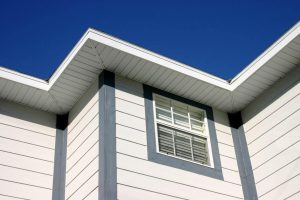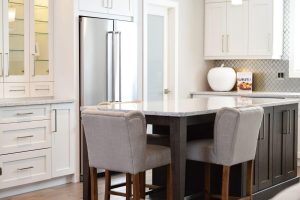Introduction
When it comes to choosing the perfect siding for your home, the options can be overwhelming. Two popular choices that homeowners often consider are Dutch Lap and Traditional Siding. Each type has its unique characteristics, benefits, and drawbacks. In this article, we will explore the differences between Dutch Lap and Traditional Siding, helping you make an informed decision for your home’s exterior.
What is Dutch Lap Siding?
Dutch Lap siding, also known as “German” or “Cove” siding, is a style that features a beveled edge on the top of the plank, giving it a distinct shadow line. The beveled edge creates a unique overlap, giving the siding a decorative and timeless look. Dutch Lap siding is often associated with traditional and colonial-style homes, adding character and charm to the overall appearance.
What is Traditional Siding?
Traditional siding, often referred to as “clapboard” or “horizontal” siding, is a straightforward and classic option. The planks are installed horizontally, with each overlapping the one below it. This simple design is widely used and can complement various architectural styles, making it a versatile choice for many homeowners.

Dutch Lap vs. Traditional Siding: A Comparison
3.1. Design and Aesthetics
Dutch Lap Siding: The beveled edge of Dutch Lap siding adds depth and dimension to the exterior of your home. The shadow lines create an attractive visual effect, highlighting the contours of your house. It’s an excellent choice for homeowners looking to achieve a more elegant and distinctive appearance.
Traditional Siding: While traditional siding lacks the beveled edge, its simplicity offers a timeless and classic look. The clean lines provide a more subtle and understated appearance, making it suitable for both traditional and modern homes.
3.2. Installation Process
Dutch Lap Siding: Installing Dutch Lap siding requires precision and skill due to its beveled edges. Professional installation is recommended to ensure a seamless and visually appealing outcome.
Traditional Siding: Traditional siding is relatively easier to install than Dutch Lap siding since it does not involve intricate bevel cuts. It is a popular choice for DIY enthusiasts who want to take on home improvement projects.
3.3. Durability and Maintenance
Dutch Lap Siding: The beveled edge of Dutch Lap siding helps prevent water infiltration and enhances its durability. With proper maintenance, such as regular cleaning and repainting, Dutch Lap siding can withstand the test of time.
Traditional Siding: Traditional siding is durable but requires more frequent maintenance. The overlapping design may trap moisture, making it essential to inspect and address any issues promptly.
3.4. Cost Considerations
Dutch Lap Siding: Due to its more intricate design and installation requirements, Dutch Lap siding is generally more expensive than Traditional Siding.
Traditional Siding: Traditional siding is often more budget-friendly, making it an attractive option for homeowners on a tight budget.
3.5. Energy Efficiency
Dutch Lap Siding: The beveled edges of Dutch Lap siding can provide additional insulation, improving energy efficiency and potentially reducing heating and cooling costs.
Traditional Siding: While traditional siding also offers some level of insulation, it may not be as effective as Dutch Lap siding in terms of energy efficiency.
3.6. Climate Suitability
Dutch Lap Siding: Dutch Lap siding performs well in various climates, including areas with high humidity or heavy rainfall, thanks to its water-resistant design.
Traditional Siding: Traditional siding is also suitable for different climates but may require extra maintenance in regions with extreme weather conditions.
3.7. Resale Value
Dutch Lap Siding: The unique and visually appealing design of Dutch Lap siding can enhance the curb appeal of your home, potentially increasing its resale value.
Traditional Siding: Traditional siding’s classic and versatile look can also positively impact the resale value of your home.
Choosing the Right Siding for Your Home
When choosing between Dutch Lap and Traditional Siding, consider your home’s architectural style, your budget, and the climate in your area. Both options offer distinct advantages, so weigh the aesthetics, durability, and maintenance requirements to make an informed decision that suits your preferences and needs.
Conclusion
In conclusion, both Dutch Lap and Traditional Siding are excellent choices for homeowners seeking durable and visually appealing exterior siding options. Dutch Lap siding stands out with its elegant design, while Traditional Siding offers a timeless and versatile appearance. Ultimately, the decision comes down to personal preferences, budget constraints, and the specific needs of your home.
FAQs
Can I install Dutch Lap siding on my own?
While DIY installation is possible, it’s recommended to hire a professional for precise and seamless results.
Does Traditional Siding require repainting often?
Regular maintenance and repainting may be necessary to keep Traditional Siding looking its best.
Which siding option is more suitable for a modern-style home?
Traditional Siding’s clean lines make it a versatile choice for modern architectural styles.
Is Dutch Lap siding more expensive than Traditional Siding?
Yes, due to its unique design and installation complexity, Dutch Lap siding tends to be more expensive.
Will Dutch Lap siding increase my home’s resale value significantly?
Dutch Lap siding’s distinctive appearance can positively influence your home’s curb appeal and resale value.



